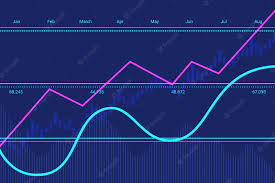When we talk about the breadth of the market, what precisely do we mean by that? The participants in the market are reflected in the Market Breadth indicator.
It’s open to a variety of interpretations, depending on who you ask. Breadth is a metric that may be used to determine the total number of stocks that are taking part in a rally. Breadth is another indicator that may be used to derive information about the number of active investors in the market.
But why exactly is market breadth such a big deal?
Whenever there is a rally in the market, the most important issue to ask is whether or not the rally can be sustained. This is determined by the sizes of the various marketplaces.
A market rally is typically followed by market bread, which is seen to be more sustainable than the rally itself. On the other side, an indication of dwindling confidence in the market is when the market has been rallying with declining width. This may be seen as a warning that traders are becoming more bearish.
Therefore, in the blog post that we have for you today, we are going to talk about how to understand market breadth indicators using StockEdge:
What exactly does it mean to look at the Market Breadth Indicator?
Breadth indicators provide traders and investors with a means to evaluate the market’s state in its entirety. Utilizing stock indexes allows one to analyse the movement that occurs in the stock market.
For instance, the Nifty 50 Advance/Decline Line is a cumulative reference that helps us understand whether more stocks are increasing or decreasing over time. This understanding may help us make more informed investment decisions.
With the use of this computation, we are able to assess the general feeling of investors about all of the stocks that make up the index.
Breadth indicators are mostly employed for the following two functions:
Market Sentiment: These indications can assist us in determining if the current trend of the market will change or continue in its current direction.
Breadth indicators are another tool that can assist us in determining the strength of an existing trend, whether it be bullish or bearish.
Breadth Indicators of the Market
The percentage or number of stocks that are trading above their Moving Average
By measuring the percentage of companies that are trading above a predetermined moving average, a breadth indicator can determine if the underlying index is experiencing internal strength or weakness.
The 50-day moving average provides coverage for short- to medium-term timescales, and the 150-day and 200-day moving averages provide coverage for medium- to long-term timelines.
Signals may be generated in a number of different ways, including by looking for levels of overbought or oversold conditions, crosses above or below 50 percent, and bullish or bearish divergences.
When the indicator is more than 50 percent, there is a tendency toward a bullish bias. This indicates that more than half of the companies that make up the index are trading higher above a specific moving average. On the other hand, a bearish bias is prevalent when the percentage is below 50.
According to the Market Breadth chart that is seen above in StockEdge, all of the Simple Moving Averages (SMAs) — 20-50-100-200 — are currently below 50 percent, which indicates that the market is currently in the bearish zone.
The percentage or number of stocks that are trading at or over their relative strength
Breadth indicators are used to determine if the underlying index is experiencing internal strength or weakness. This is done by calculating the percentage of stocks that are trading over a predetermined relative strength period.
The performance of the stock is evaluated relative to its benchmark or to the performance of another stock. This is referred to as the stock’s relative strength.
The relative strength indicator (RS) compares the performance of stock “X” to “Y,” evaluated over a period of time. For instance, in a rising market, “X” may grow more or less than “Y,” and in a declining market, “X” may decline more or less when compared to “Y.” Both of these outcomes are possible.
When the indicator is more than 50 percent, there is a tendency toward a bullish bias. This indicates that more than half of the stocks included in the index are performing better than the index as a whole. On the other hand, a bearish bias is prevalent when the percentage is below 50.
Peaks and valleys at regular intervals
High points and low points throughout a particular time frame are referred to as periodic highs and lows respectively. Users are able to view the amount of equities that have been trading around their periodic high or low over a variety of time periods.
It is possible to include a security in the Period High/Low Analysis if the price at which it trades is within 20 percent of the High-Low range for that security.
A negative bias exists in the market, as indicated by the fact that the number of stocks located in the low zone is growing while the number of stocks located in the high zone is decreasing, as seen in the bar chart that is located above.
Progress or Regression
The advance-decline ratio is calculated by dividing the total number of shares that have advanced in price by the total number of shares that have decreased in price. The ratio of advances to declines may be calculated for a number of different time periods, including one day, one week, or one month.
Taking the market as a whole into consideration, this indicator reveals whether the market is overbought or oversold.
This bar chart illustrates the rise and fall in value of the Nifty 50 and the Nifty 500 across a variety of time intervals.
An upward trend is suggested if the number of advances continues to be higher than the number of declines, while a downward trend is indicated if the number of declines continues to be higher than the number of advances.
If there is a rise in the number of Advances, this is a good sign that stock prices are improving relative to one another and that there will be an upward trend overall.
Both the Net New High and the Net New Low for the Day
The Net New 52-Week Highs indicator is a straightforward breadth indicator that is derived by subtracting the number of new lows from the number of new highs.
The number of equities that have recorded new 52-week lows is referred to as “New lows,” while the number of stocks that have made new 52-week highs is referred to as “New highs.”
This indicator offers some assistance in determining whether the market’s internal strength or weakness is stronger.
When the indicator shows a positive value, it denotes that there are a greater number of new highs. When the indicator is in the negative, on the other hand, there are a greater number of new lows.
Bottomline
It is important to keep in mind that breadth indicators can only be computed on indexes, not on individual stocks, and that this is the case. However, based on the data that is available, one may be able to compute these indicators in order to conduct an analysis of the robustness of the stock market.
In order for traders to optimise their chances of being successful, market breadth indicators should be used in conjunction with other technical analysis tools such as chart patterns and technical indicators.
We hope that you found this blog to be interesting and that you will apply its lessons to the fullest extent possible in the real world. Share this blog with your loved ones and assist us in achieving our goal of increasing people’s awareness of the need of sound financial management by showing some love.




